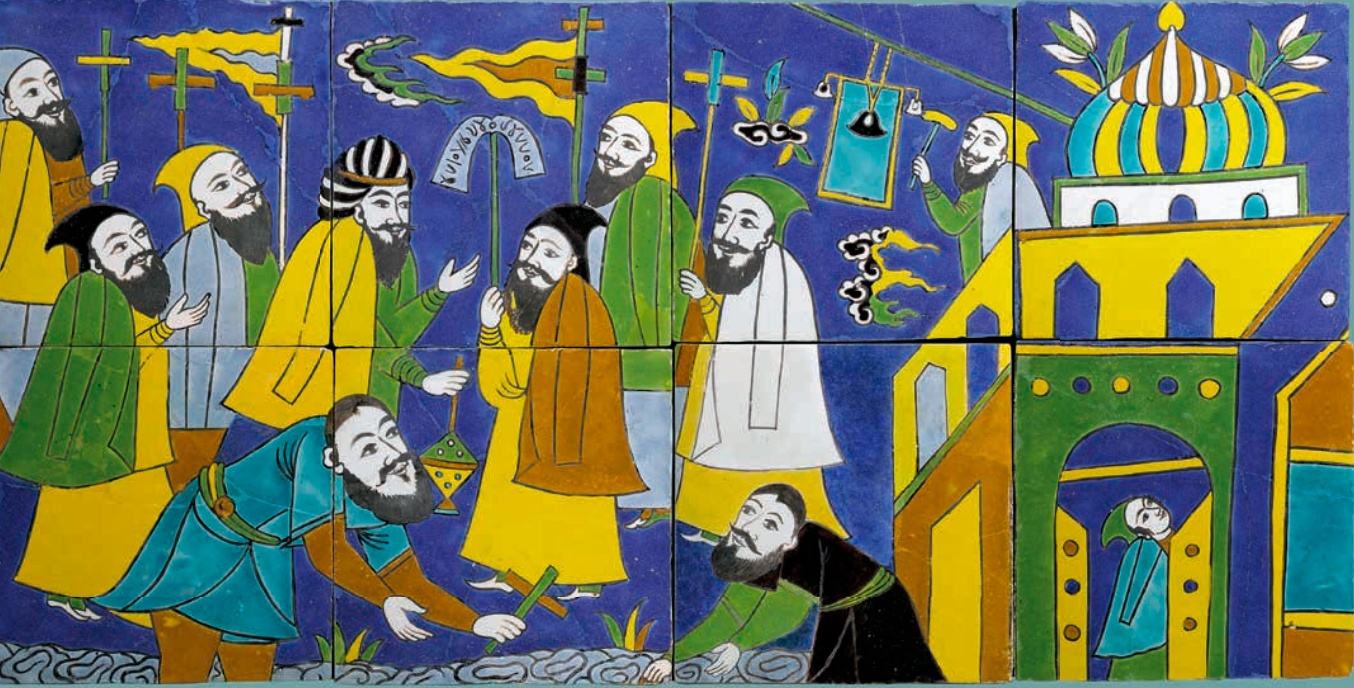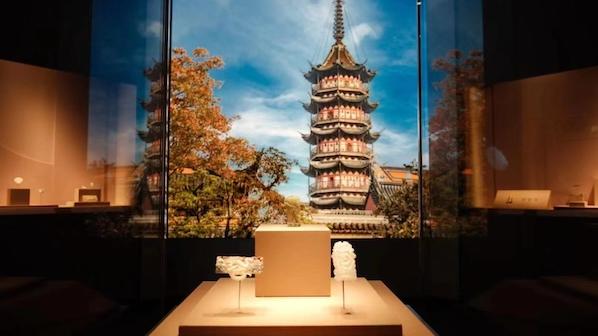
Among the 13 ancient towers remaining in Shanghai, the Yuan Ying Pagoda, standing within the Xilin Zen Temple in Songjiang District, is the tallest and has become a symbol of the Songjiang Fu City. In 2024, we will mark the 30th anniversary of the completion of the pagoda's restoration and archaeological discoveries. The "Treasures of the Pagoda: Shanghai's Yuan Ying Pagoda" exhibition at the Shanghai Museum's East Wing opens today and will be officially open to the public starting tomorrow (August 14).
This exhibition is the first to showcase the treasures of the Yuan Ying Pagoda, displaying 300 artifacts to outline the archaeological findings of the pagoda and present the historical features of ancient Shanghai and the unique charm of Jiangnan culture.
The Yuan Ying Pagoda, as the tallest existing ancient tower in Shanghai and the one that has yielded the most archaeological finds, holds significant historical, artistic, and scientific value. This exhibition will present 300 precious artifacts discovered at the pagoda through three sections: "Major Discoveries at the Xilin Pagoda," "Blessings and Auspiciousness," and "The Vast World and Human Interests."
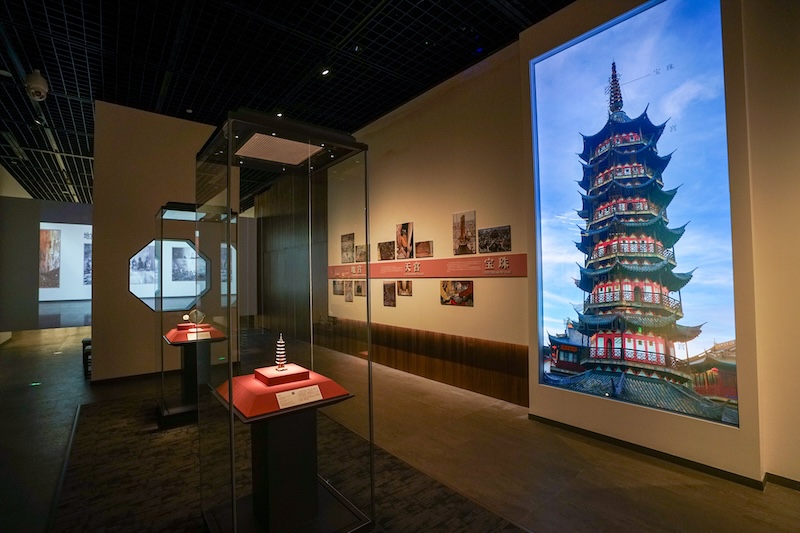
Exhibition scene
30 Years of Archaeological Discoveries Reveal the Pagoda's Secrets
The Yuan Ying Pagoda, also known as the Xilin Pagoda or Chong'en Pagoda, was initiated during the 21st year of the Hongwu era (1388) to commemorate Master Yuan Ying Rui. In the 9th year of the Zhengtong era (1444), Monk Fahui relocated the Yuan Ying Pagoda to its current site. In June of the 10th year of Zhengtong (1445), the underground palace was opened to house gold and silver statues of Buddha and relics sealed within the original pagoda's heavenly and underground palaces during the Hongwu period.
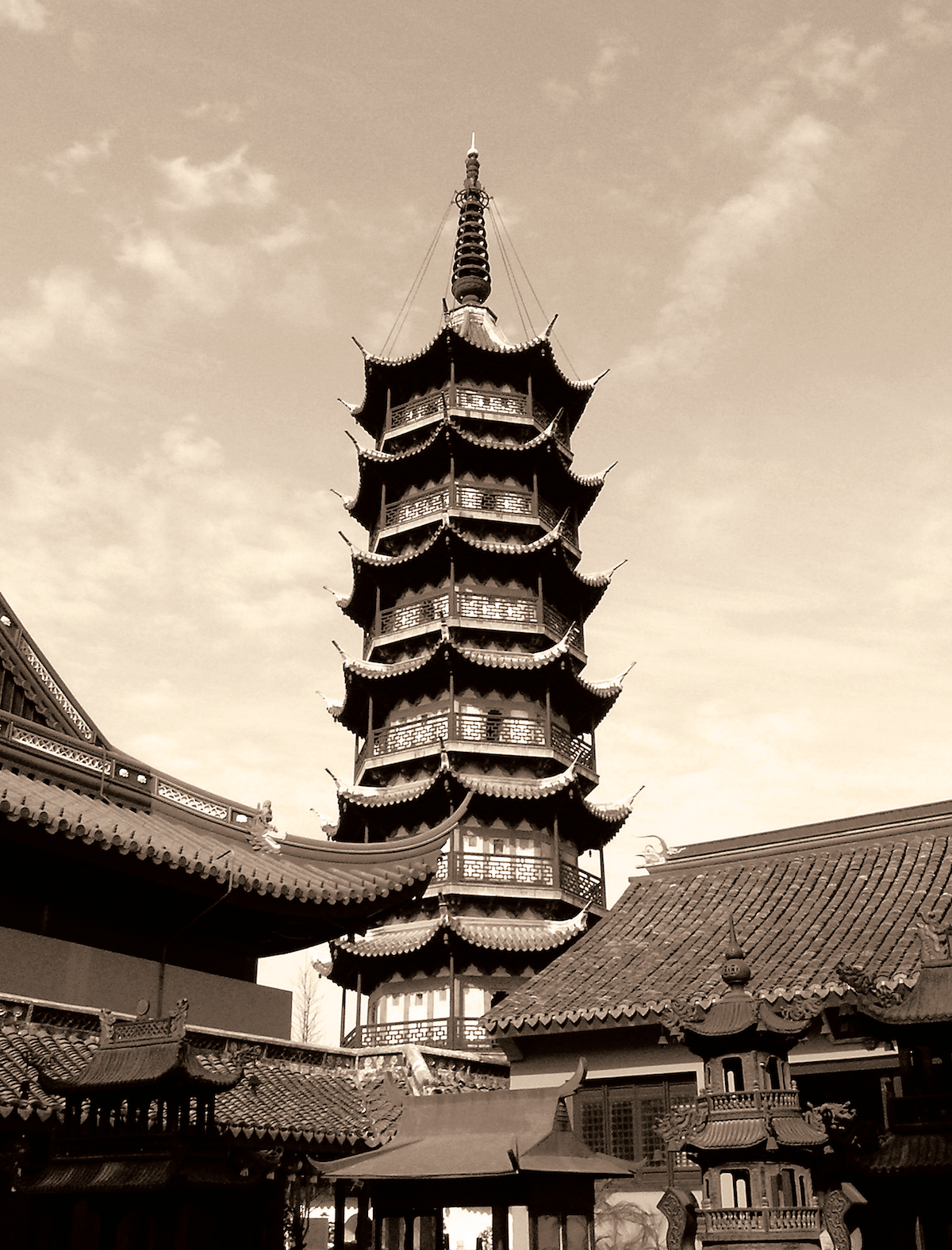
Yuan Ying Pagoda
The Yuan Ying Pagoda, with seven tiers and eight sides, exemplifies the pagoda style popular in Jiangnan during the Song dynasty, standing at a total height of 47 meters. Each layer has four doors arranged in various directions, with brick corridors added to the ground level and arched doorways to the north and south. The walls measure 3.05 meters long, gradually tapering as they rise. Each layer's exterior is embedded with stamped Buddha statues, and the wall bricks are inscribed with the donors' surnames. The inner walls of the bottom level feature a square Ming Dynasty calligraphic poem by Shen Kai, while the exterior showcases inscriptions from the 25th year of Hongwu (1392) on the "Yuan Ying Pagoda at Xilin Zen Temple" and the 13th year of Zhengtong (1448) recounting the "Reconstruction of the Yuan Ying Pagoda." In 1982, the Yuan Ying Pagoda was designated as a cultural relic protection unit in Shanghai.
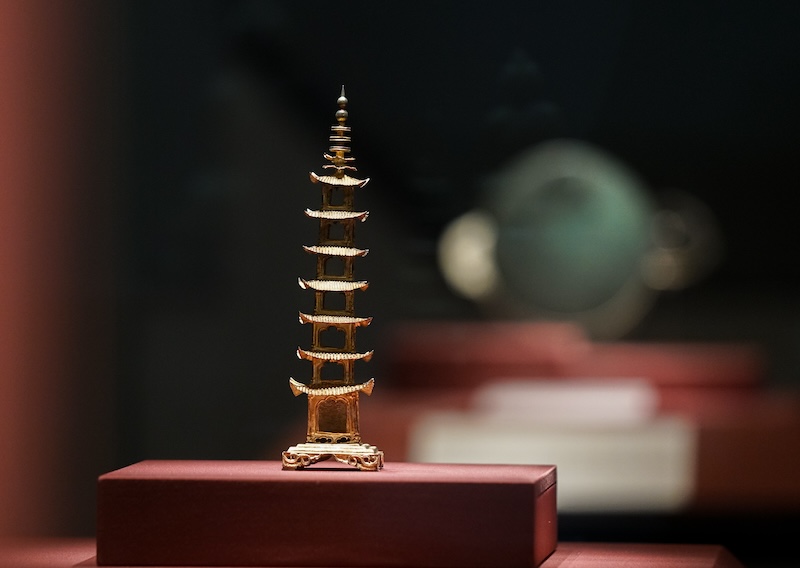
Exhibition scene Silver Pagoda from the Ming Hongwu—Zhengtong period
From 1993 to 1994, the Shanghai Municipal Cultural Relics Management Committee organized the restoration and reconstruction of the Yuan Ying Pagoda. During this process, excavations of the pagoda's finial, heavenly palace, and underground palace revealed over a thousand valuable artifacts, including Buddhist statues, ritual implements, jade, bronze, and coins, dating from the Southern Dynasties to the late Qing Dynasty. This remarkable quantity and variety is rare nationwide. Notably, many reliable dated jade artifacts from the Yuan and Ming periods were discovered at once, making it an unprecedented find in the country.
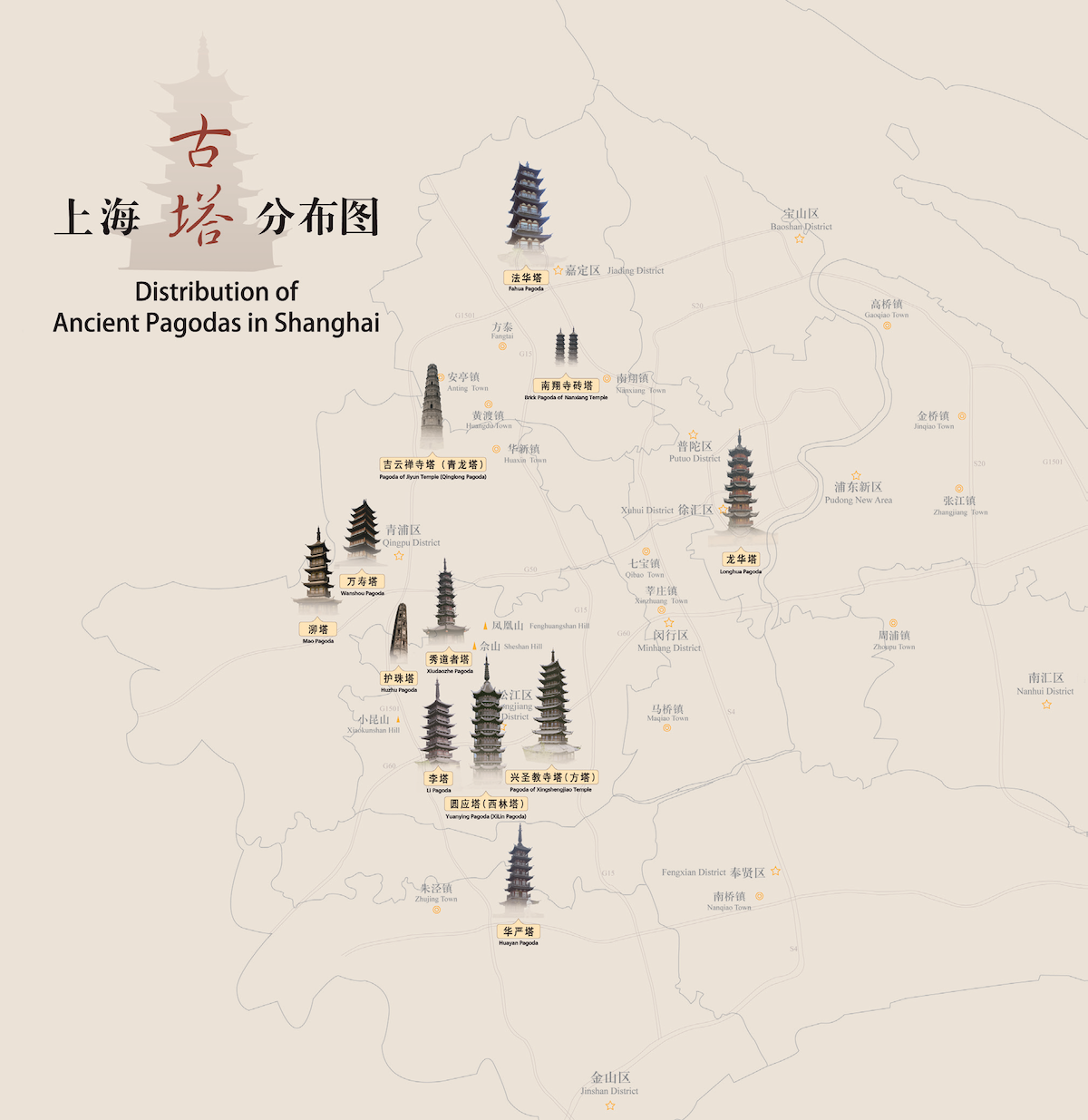
Distribution of ancient towers in Shanghai
Unearthed Artifacts Represent the Artistic Achievements of Their Time
Records from literature and inscriptions within the tower indicate that the restoration of the Yuan Ying Pagoda occurred over a long period, from the early Ming Dynasty to the late Qing Dynasty. The offerings inside the Yuan Ying Pagoda not only included artifacts from the current period but also heirloom items. The artifacts inside date back to the Southern Dynasties, spanning from the Southern Dynasties to the late Qing Dynasty.
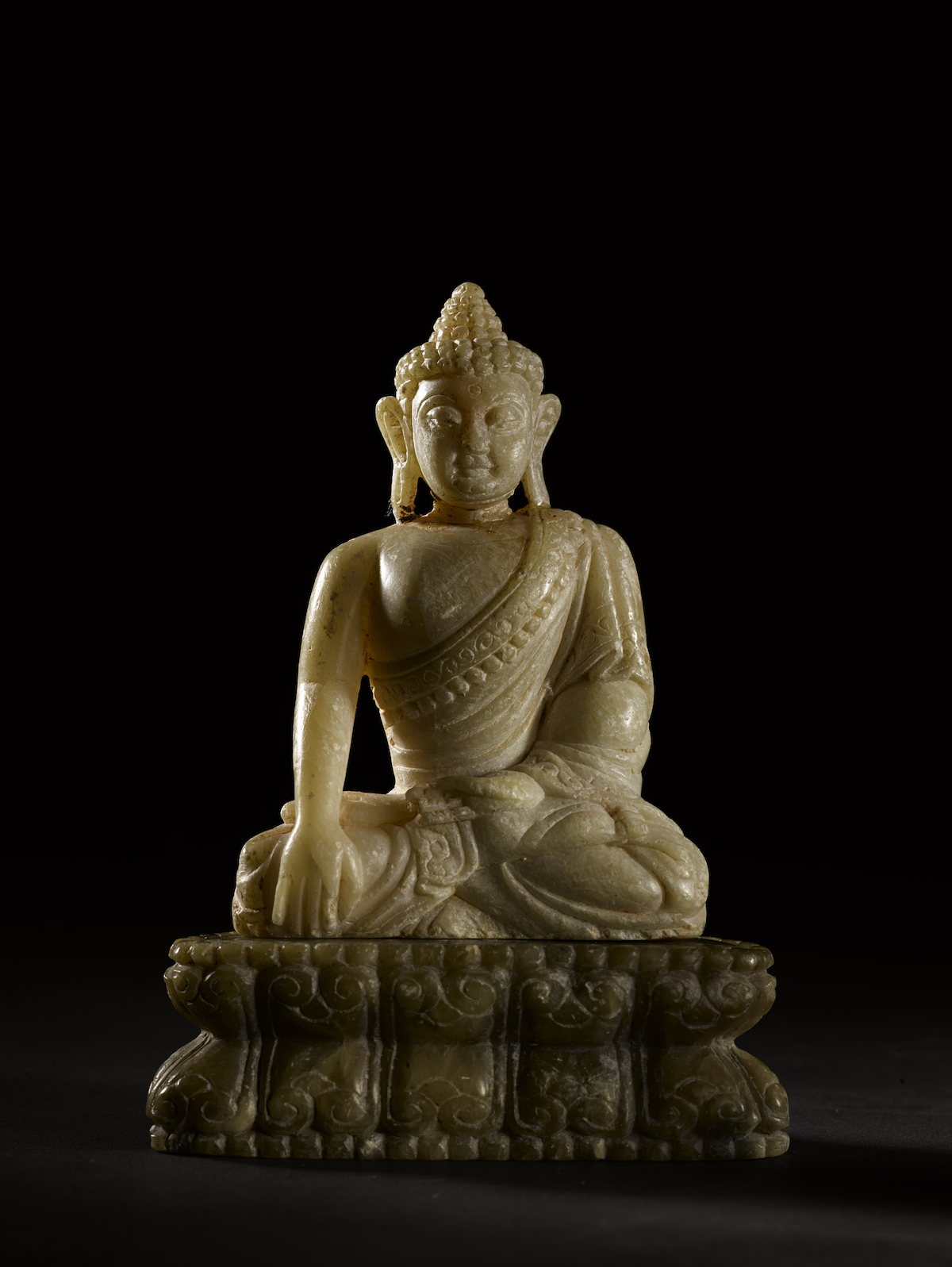
A Qing stone Buddha seated statue from the Yuan period
“Many of the artifacts discovered in the pagoda represent outstanding artistic achievements of their time or place,” notes Chen Jie, Deputy Director of the Shanghai Museum. For example, the Yuan dynasty Qingtian stone seated Buddha statue displayed at the entrance of the exhibition hall. This statue, positioned at the “C” location in the entrance, is small but exquisitely shaped, with broad shoulders and a trim waist, seated upon a lotus base. Importantly, the lotus base is inscribed with “Made by Zhang from Dadu,” referring to the Yuan dynasty's capital, present-day Beijing. This inscription verifies it as a standard example of a 14th-century style from Dadu, representing the craftsmanship of Yuan dynasty Buddha statues, making it extremely precious.” Chen Jie explains that during the Yuan dynasty, the Songjiang region of Shanghai was a significant stronghold of Tibetan Buddhism, which is why this statue was found in the underground palace of the Yuan Ying Pagoda.
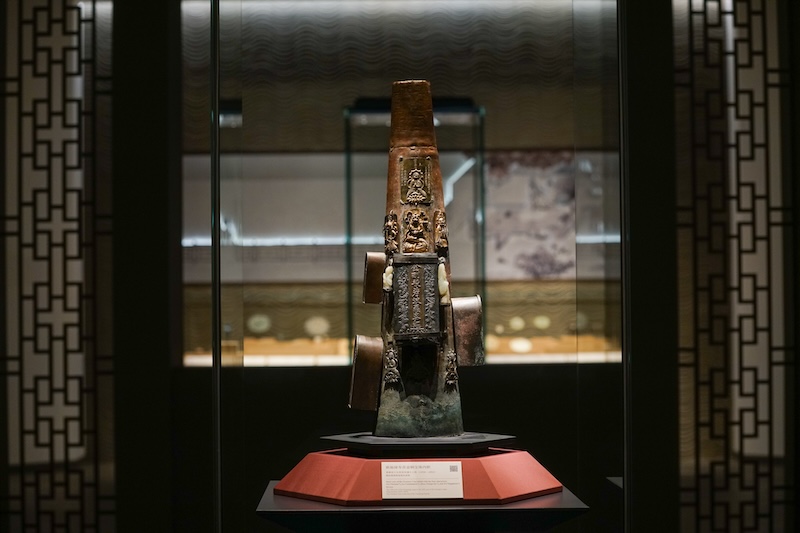
Exhibition scene Interior copper buddha from the Fulu Shouxi box

Exhibition scene Interior copper buddha from the Fulu Shouxi box (detail)
One of the exhibited items, an interior copper buddha from the Fulu Shouxi box, gathers various elements from Chinese traditional culture, including Confucianism, Buddhism, and Taoism. This item was found inside a precious vase atop the pagoda's finial, initially encased around a wooden central pillar and covered with a copper buddha. The entire interior buddha takes on a long trumpet shape, narrow at the top and wide at the bottom, with the lower section's walls inlaid with silver statue images of the Infinite Longevity Buddha, a silver sutra box, and the Fulu Shouxi copper box along with coins.
In the exhibition, one can see that the embedded silver Buddha figures within the Fulu Shouxi copper box represent: Fulu—Kuaixing; Lu—Guanyin; Shou—Achala Buddha; Xi—Luguan, among others. Here, Kuaixing is the well-known literary star, governing the literary fortunes of the world. The Kuaixing statue embodies auspicious meanings of gaining recognition and standing out, being a popular theme among ancient people. “The combination of Confucianism, Buddhism, and Taoism in this exhibit vividly reflects the nature of various beliefs and philosophical systems coexisting in Chinese traditional culture," says Chen Jie.
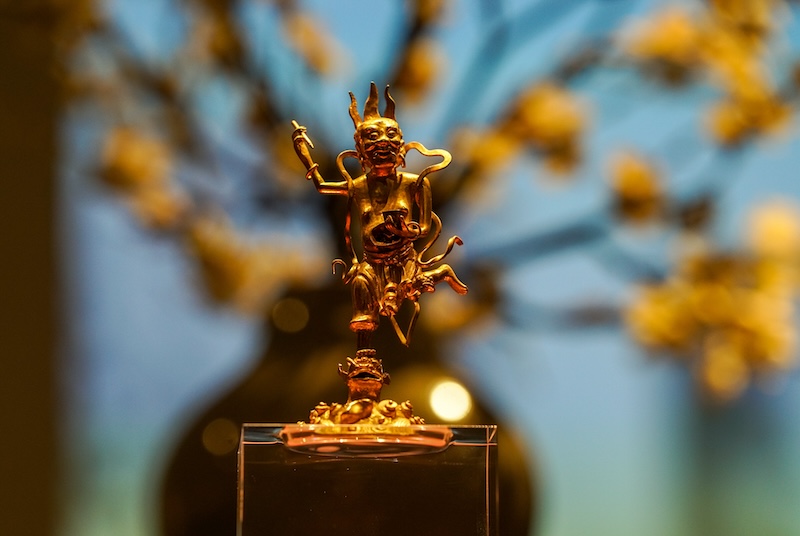
Exhibition scene Silver gilded Kuaixing statue from the copper "Fu" box
Exploring Jiangnan Folklore and Scenery Through the Pagoda's Treasures
Amidst the peaks and misty waters, the majestic Yuan Ying Pagoda has stood for centuries, symbolizing Songjiang Fu City and representing the essence of Jiangnan culture in people's memories. During the Ming and Qing dynasties, the Shanghai area, mainly centered around Songjiang Fu, was prosperous and culturally flourishing, becoming one of the most important regions in Jiangnan. With the unveiling of the pagoda's precious finds, the vivid picture of the rich and graceful lifestyle of the Ming and Qing eras in Jiangnan unfolds.
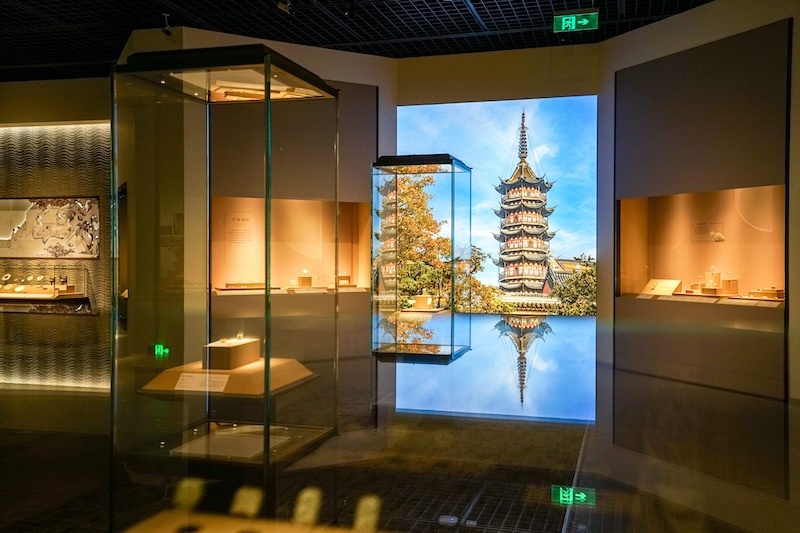
Exhibition scene
“The artifacts worshipped in the pagoda have a rich connotation. Besides the commonly found Buddhist utensils in the heavenly and underground palaces, the Yuan Ying Pagoda has also unearthed a large number of utensils for daily life,” Chen Jie explains. “This not only reflects the Buddhist art in folk beliefs but also illustrates the vibrant social atmosphere and aesthetic tastes of the people of ancient Jiangnan. Thus, our intent in organizing this exhibition was not to merely showcase a pagoda art exhibition but to reflect early settlers' lives and the cultural heritage of Jiangnan through the Yuan Ying Pagoda.”
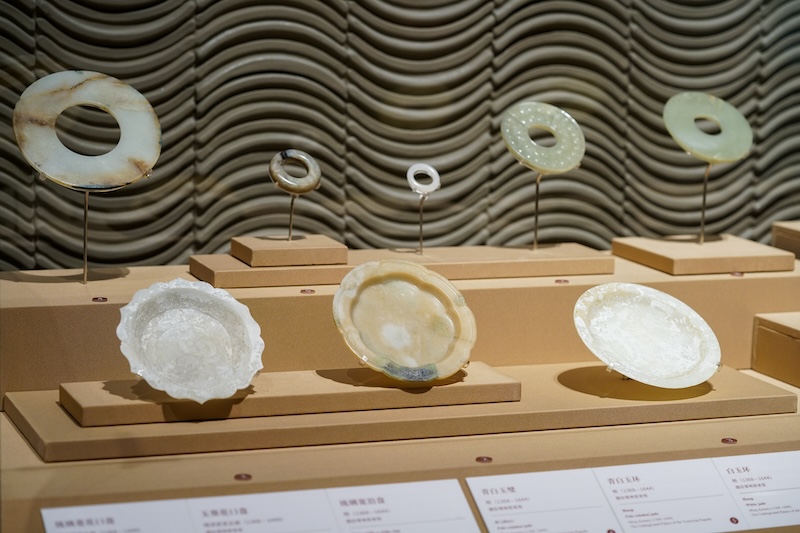
Exhibition scene

White jade fish pendant from the Yuan period (1271–1368) from the underground palace

White jade censer with heron patterns from the Yuan period (1271–1368) from the underground palace
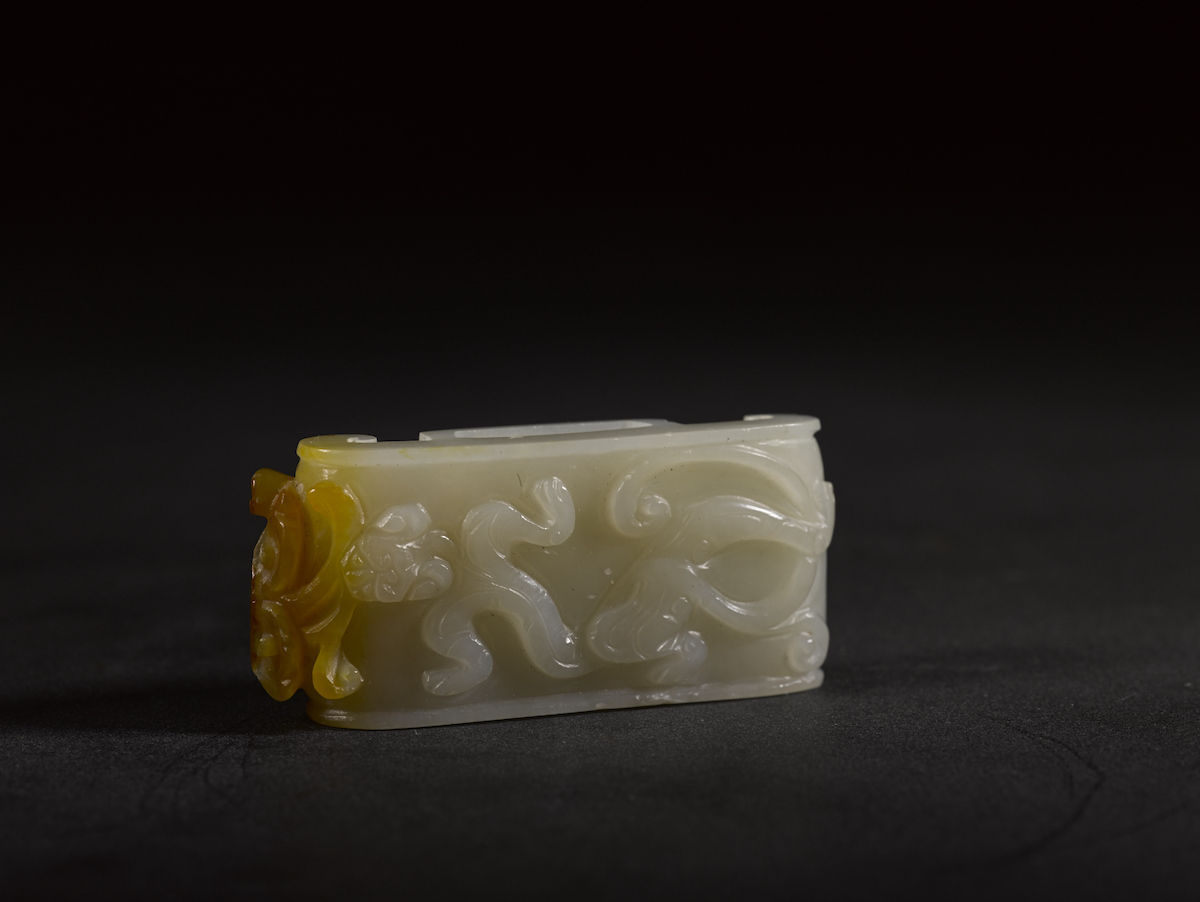
Qingbai jade dragon-patterned pendant from the Yuan period (1271–1368) from the underground palace
The exhibits include daily items used by devotees to adorn their lives, such as writing implements, dining vessels, bronze mirrors, and jewelry, reflecting the living scenes and aesthetic tastes of people at that time. The animal-themed shapes and decorations exhibit both realistic observations of nature and fantastical auspicious creatures that reflect ancient people’s understanding of the world and their hopes for a happy life filled with blessings, aligning with today's vision of harmonious coexistence and sustainable development between humanity and nature. Furthermore, child and infant subject artifacts reveal insights into societal customs and a detailed depiction of how ancient people viewed themselves. The lively and adorable images of children mirror an endless hope for the future.
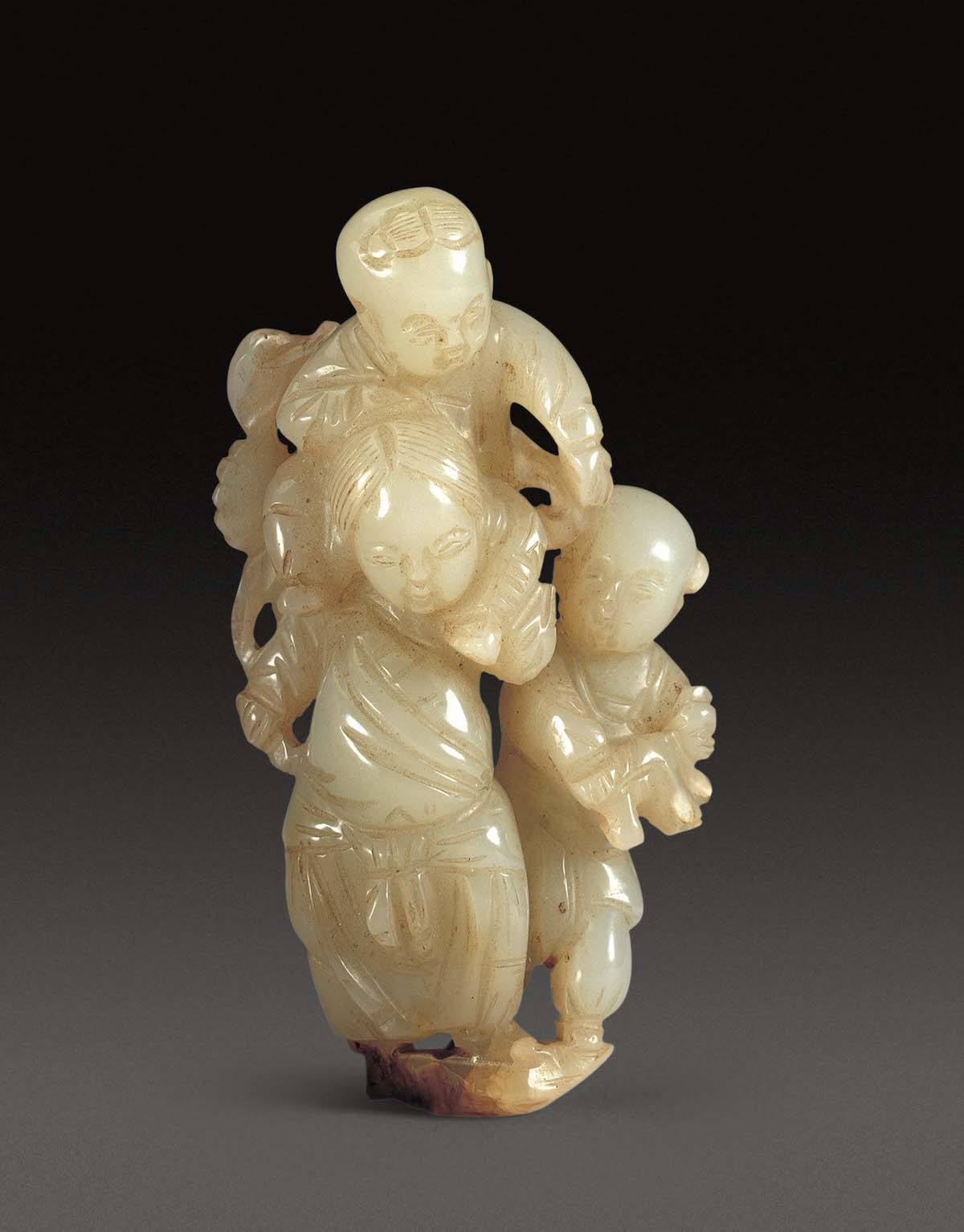
White jade pendant of three infants at play from the Hongwu-Zhengtong period (1368-1449) from the heavenly palace
The design of the exhibition forms has been styled to reflect the essence of Jiangnan culture, allowing visitors to view the ancient pagoda from different
